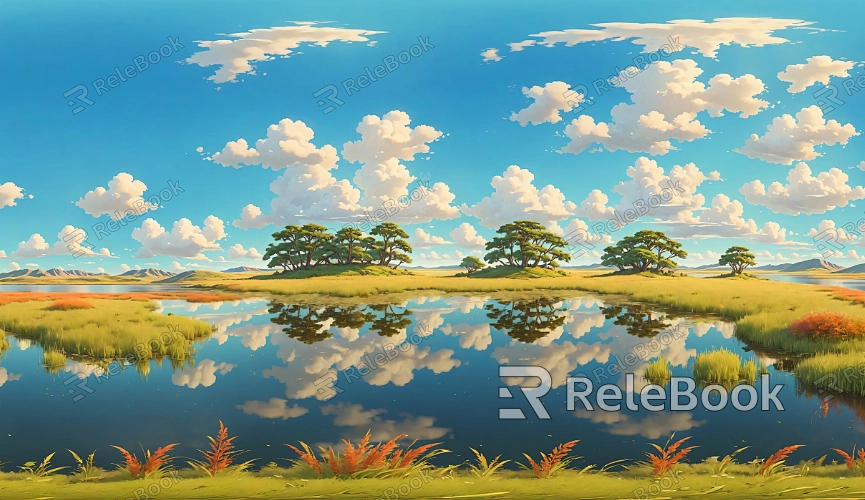How to Create a Country Scene HDR Environment Texture
When creating realistic country scenes in 3D modeling software such as Blender, 3ds Max, and Cinema 4D, designers must consider various factors like lighting, color, and detail representation. This article will explore effective methods for creating HDR environment textures for country scenes, providing specific steps and practical tips to help designers achieve optimal rendering results.

1. Understanding the Concept of HDR Environment Textures
Basic Principles of HDR
HDR environment textures encompass a broader range of brightness than standard images, resulting in more natural lighting effects. They can capture the extreme highlights and shadows found in the real world.
Unique Aspects of Country Scenes
Country scenes typically feature rich natural lighting and varied colors. When creating such scenes, HDR textures effectively represent details in grass, skies, buildings, and other elements.
2. Collecting Materials and Reference Images
On-Site Photography
If possible, visit a rural environment to capture your own materials. This method ensures you gather authentic lighting and color information.
Online Resources
Utilize online image libraries to find existing HDR images. Be sure to select materials suitable for rural scenes, such as images depicting sunny, cloudy, or sunset conditions.
3. Using 3D Software to Create HDR Environment Textures
HDR Functionality in Blender
In Blender, you can directly import HDR images using the “Environment Texture” node. Adjust intensity and color settings to achieve the desired lighting effect.
Tips for 3ds Max
In 3ds Max, use the “Sky” material to create the environment, tweaking parameters to simulate realistic skies and lighting. Combining this with HDR images can bring your country scene to life.

4. Adjusting and Optimizing Rendering Settings
Lighting Configuration
Ensure that the light sources in your scene are consistent with the HDR texture for optimal results. Adjust the intensity and color of the light according to the scene's needs.
Reflections and Shadows
Set up reflections and shadows properly during rendering to enhance the depth and realism of the scene. Make sure reflections align with the light source, and shadows fall naturally.
5. Rendering and Post-Processing
Rendering Output Settings
When rendering, choose appropriate resolution and format to ensure image quality. For images requiring post-processing, using a high dynamic range format is recommended.
Post-Adjustment
Utilize image editing software for post-processing adjustments, including color correction and brightness/contrast tweaks to enhance the visual appeal.
6. Practice and Iteration
Continuous Experimentation
The process of creating HDR environment textures involves trial and error. Adjust settings based on rendering results to find the best combinations.
Seeking Feedback
Share your work with peers or online communities to gather feedback and suggestions, helping you improve and refine your designs further.
By following these steps, designers can effectively create HDR environment textures for country scenes, enhancing the realism and aesthetic quality of their renders. Mastering these techniques allows designers to tackle various design challenges with confidence.
Throughout this process, leveraging resources and tools from Relebook can make your design journey even more seamless. Whether you’re looking for inspiration or expert technical support, Relebook offers a wealth of materials and knowledge to elevate your creative work.

